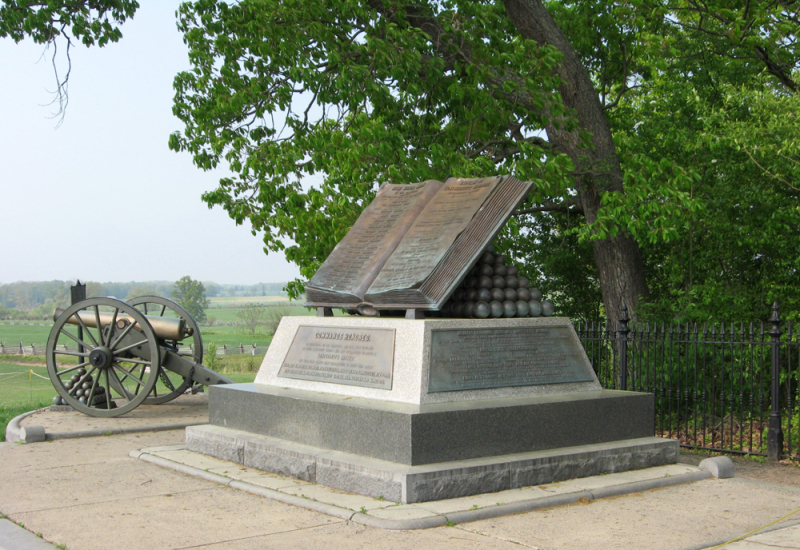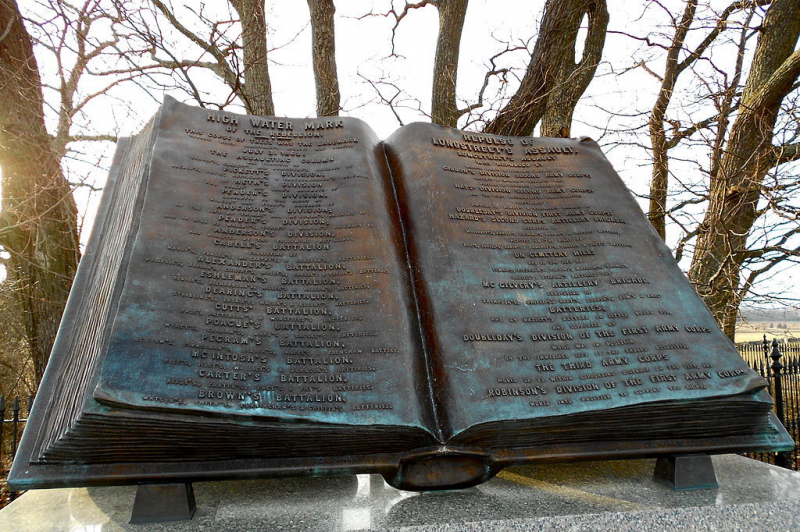The High Water Mark of the Rebellion monument
The High Water Mark of the Rebellion monument is a monument on the Gettysburg Battlefield that features a large bronze tablet that lists the Confederate Army of Northern Virginia infantry attack units from the third day of the Battle of Gettysburg as well as the "respective troops who met or assisted to repulse Longstreet's Assault" from the Union Army of the Potomac.
The memorial is named after Pickett's Charge dead and wounded line, which at The Angle represented the point at which "4,500 soldiers lay down their arms and came in as captives" and which also symbolized the Union army's worst breach. Unit monuments, which also contribute to historic district structures, are now typically used to designate the line.
The Gettysburg Battlefield Memorial Association twice rejected Bachelder's memorial plan before finally approving it the third time. The monument, which was originally erected on April 27, 1892, was recast to include two missing units, and it was then dedicated with a speech by the then-former Governor Beaver urging that the battlefield be made into a National Park. Unknown to many, a plaque (MN389) was added to the memorial in honor of the directors of the Gettysburg Battlefield Memorial Association in 1895. Besides, the memorial is also the place that hosted an 1897 lecture by James T. Long to 7,097 visitors at The Angle.
In sum, the High Water Mark of the Rebellion monument:
- was built on April 27, 1892, after two times were rejected.
- in honor of the Confederate Army of Northern Virginia infantry attack units from the third day of the Battle of Gettysburg.
- a plaque (MN389) was added to the memorial to honor the directors of the Gettysburg Battlefield Memorial Association.







